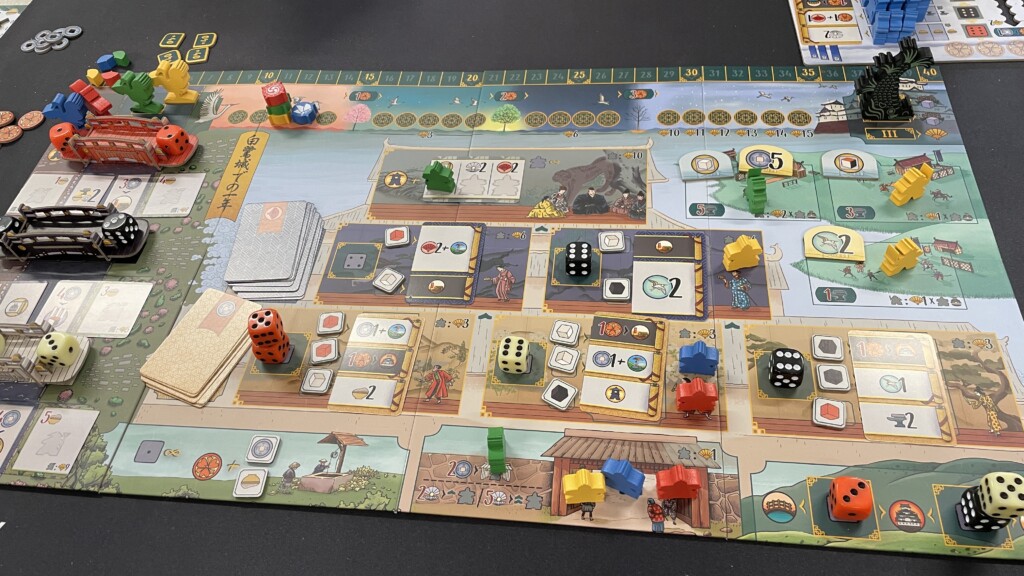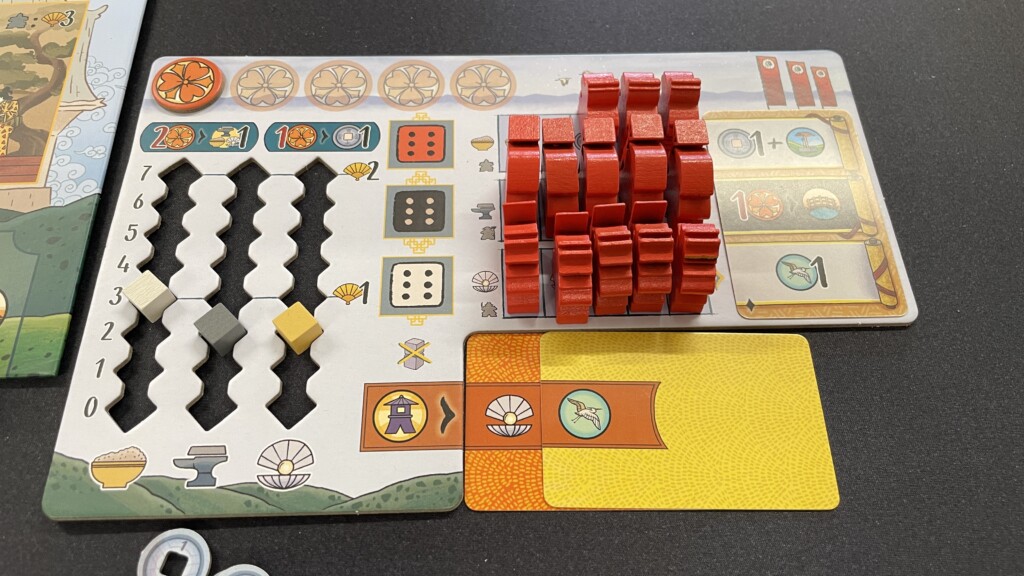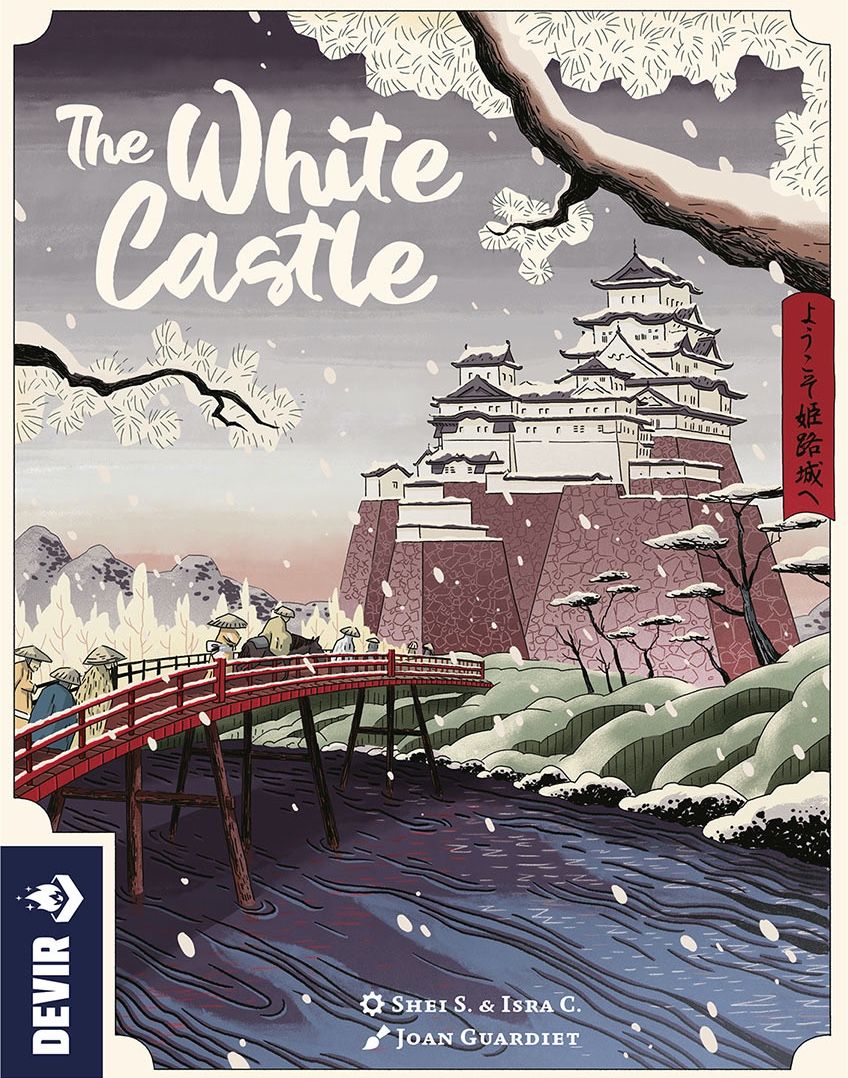The White Castle is an interesting dice-drafting game set in Himeji Castle.
Can you cope with the ever-changing board and dice?
The heron flies over the Himeji sky while the Daimyo, from the top of the castle, watches his servants move. Gardeners tend the pond, where the koi carp live, warriors stand guard on the walls, and courtiers crowd the gates, pining for an audience that brings them closer to the innermost circles of the court. When night falls, the lanterns are lit and the workers return to their clan.
The White Castle Game Overview
Quick Rules Summary
This is a fairly in-depth medium-weight Euro so this rules overview will be far from complete but will give all the top layer rules so you can see how it plays.
Players draft one of the coloured dice from the bridges and place it in a space on the board. These actions allow you to gain resources and take various actions around the different parts of the Castle. To do this, you put your various shaped meeples in their spaces from their player board (known as the personal domain).
Courtiers move up the castle floor by floor. On higher floors, the cards used to take actions within the castle are taken by the player and placed on their player board and the card in the castle is replaced with a new one.
These cards stack up various resources on your player board and when the lantern action is taken, all of these resources are gained.
Warriors are placed outside the castle walls and also gain resources.
Gardeners go to the garden and may gain resources depending on the position of undrafted dice at the end of the round.
How do you win?
After 3 rounds the game ends.
You score points for resources and points for your position on the track you move up whenever you gain a Crane icon. (Which also determines turn order)
Courtiers score for which floor of the castle they are on.
Warriors score by the number of Courtiers you have inside the castle.
Gardeners score the number of points for the card they are on the most points wins.

Main Mechanisms
There is dice drafting and resource management for your actions around the board. BGG says the game has worker placement but as the dice aren’t described as workers I don’t count that. The meeples are placed, but not to take actions only as an effect of the dice placement.
Theme
I like Japanese Board Games and those based in Japan. The theme makes sense based on the castle’s history as I understand it. It’s obviously abstracted a bit, but the elements make sense.
Setup
Laying out a few bits. The cards are awkward at first but you get used to which ones go where so it’s straightforward.
Lining up the meeples on the player board is the fiddley bit.
Components & Artwork
The cardboard dice bridges and wooden meeples are nice. The cards and everything else are fairly standard quality.
The artwork is minimal but has a pleasant, calming Japanese feel. The iconography is really good and lets you know what you’ll be gaining and doing.

Ease of Teaching
So while everything is straightforward and easy to read it’s not exactly easy to teach at first. You have to front-load all the actions and the meeple actions and scoring. It takes a while and feels quite complicated, but it’s not that bad once you play.
There is zero hidden information which helps with teaching.
Similar Games
For dice placement games, I really like Bora Bora which has a similar feel to it.
It’s worth mentioning The Red Cathedral and while it’s not similar, it’s in the same series.
The White Castle Review
Positives
The ever-changing board and dice options make each action you take feel different and very important.
You only take 9 actions in the game which again, makes each action feel important.
The game looks really nice and is quite relaxing to play, there is always a decent action to take.
It’s cheap at under £30 and comes in a small box.
Negatives
The amount of info to take in at the start of the game is a bit much.
Summary
I bought this while playing it, and I plan to visit the real castle next year! That’s how much I enjoyed this game.
Jesta ThaRogue



Leave a Reply